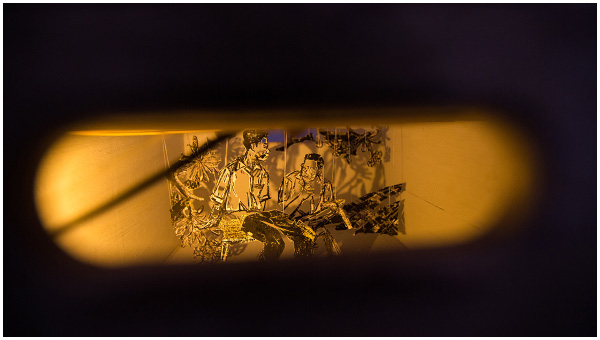倘若時間是種語言,露西‧戴維斯的〈木:刻電影〉便是以時間做為跨物種的共通語言,探討跨境遷徙的兩種平行生態:生物與政治。〈木:刻電影〉係由〈再聚(木:刻)〉之創作計畫演進而來,是另一重組〈柚木之道〉裝置的新作品,不僅呼應「負地平線」的展覽主題,即以移動形式體現現代性暴力,透過木頭的時間感,重敘新加坡現代化的歷程,並詰問人類世的機械動態影像。〈木:刻電影〉的裝置有三個部分:帶動木刻懸絲偶所進行的燈影戲、民國之際流亡南洋的中國左翼知識份子所創作之兩幅現代木刻版畫,以及結合木刻版畫美學的逐格實驗動畫。這批中國知識份子的歷史經驗,交織在他們創作所使用的柚木木料中:南洋的柚木自16世紀起便歷經著跨海貿易的旅途。戴維斯在此創作計畫構築了複數時間組成的星叢,包含著木頭的時間、發展主義的時間以及南洋大學創校先烈從公眾記憶中逝去的時間。藝術家深切體會當今全球非法伐木的濫墾,以及具社會主義傾向的藝術創作遭大眾集體遺忘之迫切現實,藉由〈木:刻電影〉尋求帶有社會生態意識的觀看模式,並試圖發展動態影像的另翼美感認知。
|
If time could be a form of language, Lucy DAVIS has traced the movement of time via the recording of material, poetic and genetic and art historical migrations of wood to weave a language between the human world and the ecosystem. Wood: Cut Cinema is the latest incarnation an ongoing inquiry into stories of wood in island Southeast Asia, entitled Together Again (Wood: Cut) (2008-2017). This particular reconfiguration not only resonates with the the curatorial inquiry of Negative Horizon i.e. the violent impacts of modernity in forms of mobility— but also interrogates the anthropocentric apparatus of the moving image by rearticulating the formation of Singapore as a modern state from the temporal perspectives of trees and wood. Wood: Cut Cinema consists of three components: The first is an an installation with animated woodprint puppet dioramas informed by the mid twentieth century Modern Woodblock Movement of the migrant Chinese Left (MWM) as well as evoking to the shadow play of wayang kulit . The second component comprises two woodprint collage works; the one a reproduction of Nanyang University 1955 an iconic print by Lee Kee Boon; a member of the MWM . The other print is of a 1930’s teak bed found in a Singapore karang guni junk store; the main material, actor and subject of the third component; an experimental hand-animated film integrating an aesthetic of woodprint and stop-motion. The historic experiences of diasporic Chinese artists and intellectuals interweave with the timbers used in their artworks and the teak that has been traded across the oceans since the 16th Century. DAVIS deliberately sets up a constellation of temporalities, including the time of wood, the time of developmentalism, and the time of the faded collective memories of Nanyang University from those woodblock print artists. Motivated by a global context of deforestation and illegal logging in the region and by the collective oblivion of the historical trajectory of art with socialist affiliations, Wood: Cut Cinema suggests an alternative epistemology of the aesthetics of moving images, combined with a historical socioecological awareness. |


